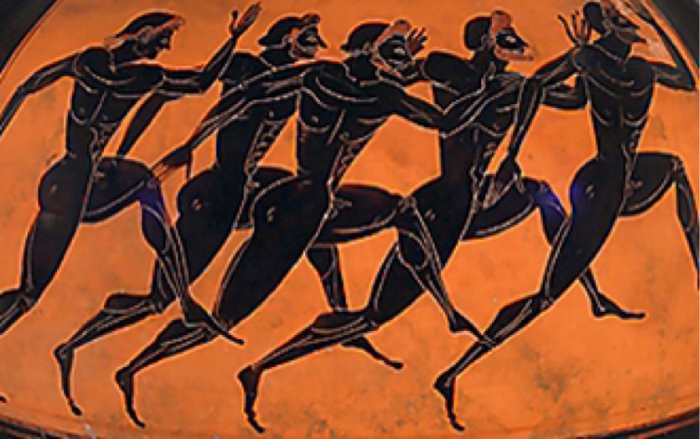Probably art even more than literature reflected the true character of Hellenic civilization. The Greek was essentially a materialist who conceived his world in physical terms. Plato and the followers of the mystic religions were, of course, exceptions, but very few other Greeks had much interest in a universe of spiritual realities. It would be natural therefore to find that the material emblems of architecture and sculpture should exemplify best the ideals which the Greek held before him.
What did Greek art express? Above all, it symbolized humanism – the glorification of man as the most important creature in the universe.
Though much of the sculpture depicted gods, this did not detract in the slightest from its humanistic quality. The Greek deities existed for the benefit of man, so that in glorifying them he glorified himself. Certainly there was nothing mystical or otherworldly in the religious aspects of Greek art. Both architecture and sculpture embodied the ideals of balance, harmony, order, and moderation. Anarchy and excess were abhorrent to the mind of the Greek, but so was absolute repression. Consequently, his art exhibited qualities of simplicity and dignified restraint—free from decorative extravagance, on the one hand, and from restrictive conventions on the other.
Moreover, Greek art was an expression of the national life. Its purpose was not merely aesthetic but political: to symbolize the pride of the people in their city and to enhance their consciousness of unity. The Parthenon at Athens, for example, was the temple of Athena, the protecting goddess who presided over the corporate life of the state. In providing her with a beautiful shrine which she might frequently visit, the Athenians were giving evidence of their love for their city and their hope for its continuing welfare. The art of the Hellenes differed from that of nearly every people since their time in an interesting variety of ways. Like most of the tragedies of Aeschylus and Sophocles, it was universal. It included few portraits of personalities either in sculpture or in painting.The human beings depicted were generally types, not individuals.
Again, Greek art differed from that of most later peoples in its ethical purpose. It was not art for the sake of mere decoration or for the expression of the artist’s individual philosophy, but it was a medium for the ennoblement of man. This does not mean that it was didactic in the sense that its merit was determined by the moral lesson it taught; but rather that it was supposed to exemplify qualities of living essentially artistic in themselves. The Athenian, at least, drew no sharp distinction between the ethical and aesthetic spheres; the beautiful and the good were really identical. True morality therefore consisted in rational living, in the avoidance of grossness, disgusting excesses, and other forms of conduct aesthetically offensive. Finally, Greek art may be contrasted with most later forms in the fact that it was not “naturalistic.” Although the utmost attention was given to the depiction of beautiful bodies, this had nothing to do with fidelity to nature. The Greek was not interested in interpreting nature for its own sake, but in expressing human ideals.
You can also read:The Ancient Greek theatre
Are you looking for Greek Lessons/ courses in Manchester or online with a professional teacher? Click here: Modern Greek Language courses to learn more about our Greek lessons. You can choose either face to face lessons – if you live in Manchester- or online courses


8 Comments. Leave new
… [Trackback]
[…] Find More Info here to that Topic: mygreektutor.co.uk/the-meaning-of-greek-art/ […]
… [Trackback]
[…] Find More to that Topic: mygreektutor.co.uk/the-meaning-of-greek-art/ […]
… [Trackback]
[…] Read More on that Topic: mygreektutor.co.uk/the-meaning-of-greek-art/ […]
… [Trackback]
[…] Here you can find 59899 additional Info on that Topic: mygreektutor.co.uk/the-meaning-of-greek-art/ […]
… [Trackback]
[…] There you will find 85263 additional Information on that Topic: mygreektutor.co.uk/the-meaning-of-greek-art/ […]
… [Trackback]
[…] Find More here on that Topic: mygreektutor.co.uk/the-meaning-of-greek-art/ […]
… [Trackback]
[…] Read More here to that Topic: mygreektutor.co.uk/the-meaning-of-greek-art/ […]
… [Trackback]
[…] Info on that Topic: mygreektutor.co.uk/the-meaning-of-greek-art/ […]